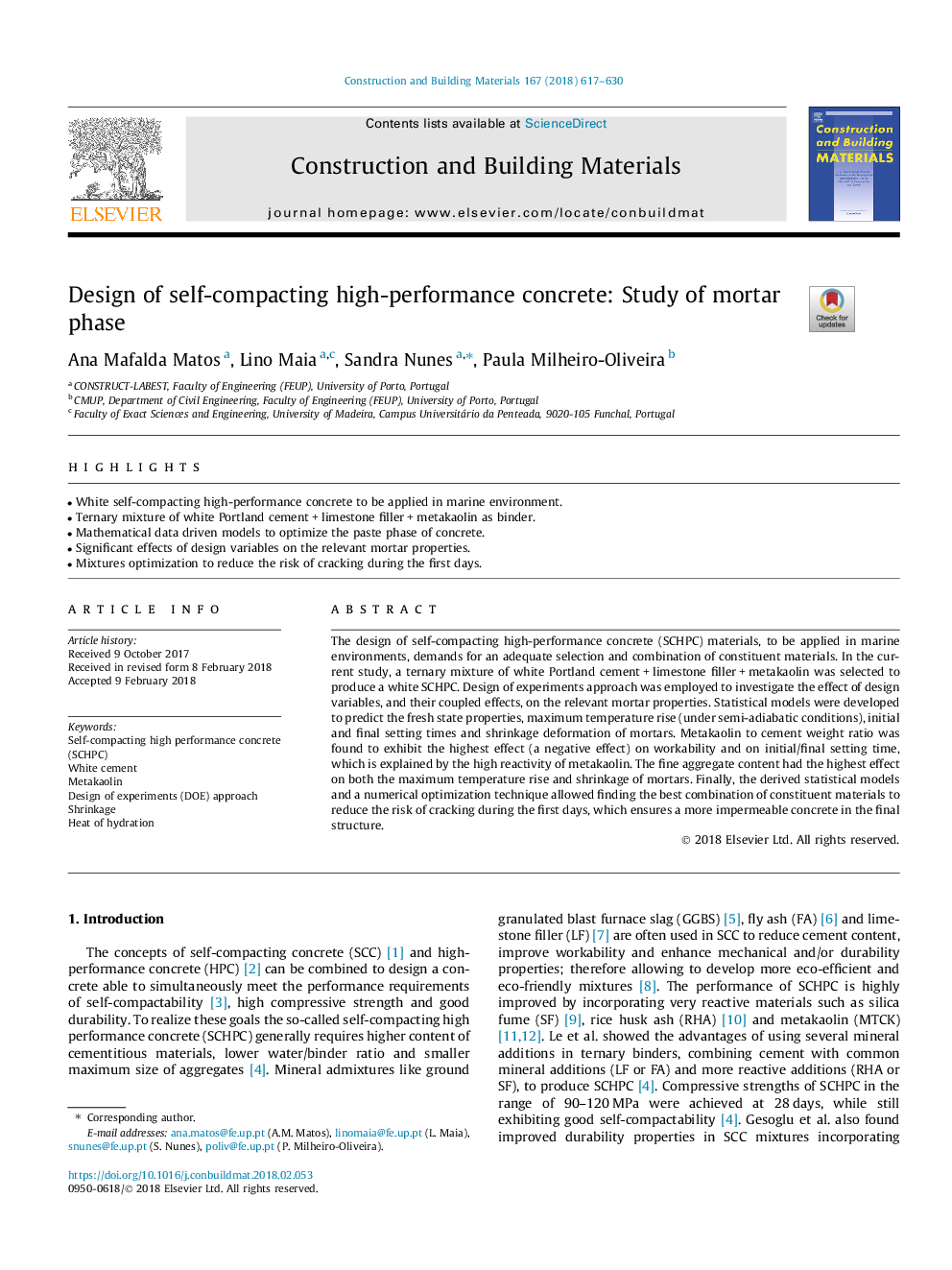| Article ID | Journal | Published Year | Pages | File Type |
|---|---|---|---|---|
| 6715259 | Construction and Building Materials | 2018 | 14 Pages |
Abstract
The design of self-compacting high-performance concrete (SCHPC) materials, to be applied in marine environments, demands for an adequate selection and combination of constituent materials. In the current study, a ternary mixture of white Portland cementâ¯+â¯limestone fillerâ¯+â¯metakaolin was selected to produce a white SCHPC. Design of experiments approach was employed to investigate the effect of design variables, and their coupled effects, on the relevant mortar properties. Statistical models were developed to predict the fresh state properties, maximum temperature rise (under semi-adiabatic conditions), initial and final setting times and shrinkage deformation of mortars. Metakaolin to cement weight ratio was found to exhibit the highest effect (a negative effect) on workability and on initial/final setting time, which is explained by the high reactivity of metakaolin. The fine aggregate content had the highest effect on both the maximum temperature rise and shrinkage of mortars. Finally, the derived statistical models and a numerical optimization technique allowed finding the best combination of constituent materials to reduce the risk of cracking during the first days, which ensures a more impermeable concrete in the final structure.
Related Topics
Physical Sciences and Engineering
Engineering
Civil and Structural Engineering
Authors
Ana Mafalda Matos, Lino Maia, Sandra Nunes, Paula Milheiro-Oliveira,
